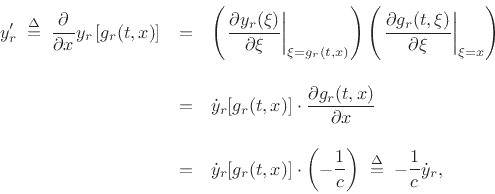Let's use the above result to derive the slope of the ideal vibrating string From Eq.(C.11), we have the string displacement given by
By linearity of differentiation, the string slope is given by

Consider only the right-going component, and define

with
 .
By the chain rule,
.
By the chain rule,

The left-going component is similar, but with
